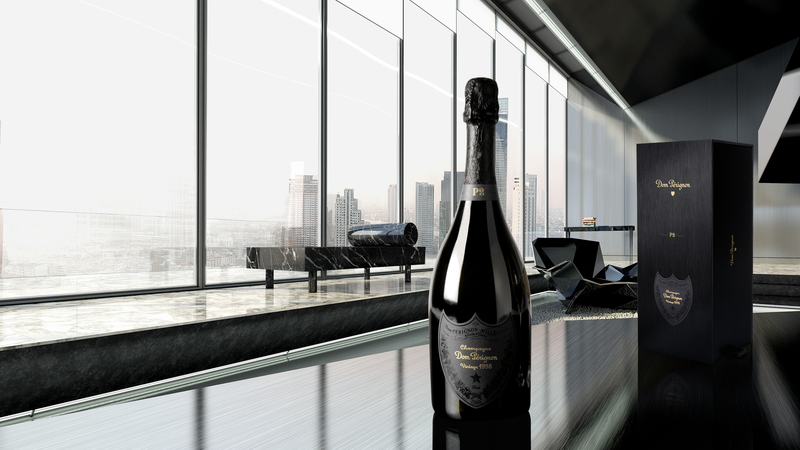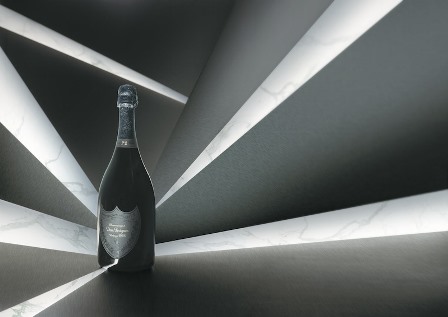 One of the things I most often get asked is the “when to drink my…” wine question and it is often a hard one to answer definitively. The number of variables involved, not least of all cellaring conditions, means that a drinking window is a rough guide at best when someone stops you in the street.
One of the things I most often get asked is the “when to drink my…” wine question and it is often a hard one to answer definitively. The number of variables involved, not least of all cellaring conditions, means that a drinking window is a rough guide at best when someone stops you in the street.
But there are the odd wines that I’ve tasted regularly enough to notice that they fall into a very regular pattern in spite of the array of variables. For me, Dom Perignon is one of those wines that seem to follow a well-worn and consistent pattern of maturation, changing gears around the same point in time. Anyone who has asked me when to drink their Dom would have been told to aim for the 15-year mark.
A recent tasting with Richard Geoffroy’s right hand man, Vincent Chaperon, provided plenty of insight into the “how Dom ages” discussion, particularly as he was opening the newest aged release 1998, alongside a 1996 Œnotheque release and the current regular release 2004.
The old Œnotheque release program has been re-badged as P2 – referencing what Geoffroy has coined Dom Perignon’s second ‘plenitude’ of its evolution. And whilst this seems ostensibly a new, more specific name for the same late-release program, it does highlight a particular stage in the evolution of Dom Perignon and sets the tone for a more complex discussion around this.
The thing I wanted to flesh out with Chaperon was the Dom Perignon team’s insight into lees maturation in the context of this P2 release and the way that Dom is engineered for these various phases of its development on lees, developing and delivering so reliably at 15 years from vintage.
The 1998 seemed an ideal vintage around which to have this discussion too. The 1998 P2 release was bottled in 1999 and disgorged in 2012 and has transformed into a more complex and profound Champagne, as you would expect. But the most significant change is the sense of an extended length, a more focused and more energetic finish on the palate, perhaps an unexpected result for many who may have considered it.
On release the 1998 Dom was a Champagne with a fairly full, round and creamy palate. Revisiting it with around double the time spent maturing on lees it seems to have compressed, chiseled and noticeably changed shape. There’s a newly refreshed finish on the wine, also seemingly intensified and, as I said already, seemingly lengthened.
 Chaperon talks of a “sapidity” that is brought about by the longer maturation on lees, a kind of minerality, alongside what he also calls aromatic length. “The first plenitude is always around 6-8 years when the wine finds harmony,” he says, “the second plenitude is about energy and we decide to release when the energy appears in the wine, energy through the finish, born of tension between freshness and maturity. The third plenitude is a stage in which maximum complexity is sought, very concentrated, with the most wisdom but with less energy.”
Chaperon talks of a “sapidity” that is brought about by the longer maturation on lees, a kind of minerality, alongside what he also calls aromatic length. “The first plenitude is always around 6-8 years when the wine finds harmony,” he says, “the second plenitude is about energy and we decide to release when the energy appears in the wine, energy through the finish, born of tension between freshness and maturity. The third plenitude is a stage in which maximum complexity is sought, very concentrated, with the most wisdom but with less energy.”
Geoffroy, Chaperon and the Dom Perignon winemaking team are keen to gather people around their world of lees maturation in order to teach a more complex understanding of the effects. “There’s a misunderstanding of the importance of this stage,” Chaperon says. “There are things we can explain with lees maturation and many things we cannot, it is a discussion between the yeast and the personality of the blend you build and it is different for every Champagne, in fact, for every blend.”
Maturation on lees is true to Dom Perignon’s construction and style and the blend is built from the beginning for a long maturation on lees, right back to vineyard selection and time of harvest. Once in the winery, it is pushed towards a reductive orientation from the beginning, preserving the vibrancy of what Chaperon refers to as the “initial fruitiness.”
“This includes everything,” he says, “the pressing, the fermentation, the way we handle the wine. This is always looking to preserve the original primary fruitiness of our grapes until the second alcoholic fermentation in the bottle.”
If terroir and vintage character shape the first stage or ‘plenitude’ then it is the impact of the yeast lees which is going to release elements of texture, structure and sapidity for the second plenitude. “Everything you do early on has an impact on the way the maturation on lees will be handled and the result on the wine. It’s one of the pillars of Champagne but few people really talk properly about it,” Chaperon muses.
Geoffroy, Chaperon and the team are really focusing on this maturation on lees as a key to the Dom Perignon style, a paradox of sorts for them, because it is in fact a passive process, yet influenced or set up by the way in which they articulate the blend before the second alcoholic fermentation. As Chaperon puts it, “The blend you build must consider the future process of maturation and you are always looking to the absolute final result which is, in fact, the third plenitude.”
There’s a carefully judged tension built into Dom Perignon – the initial direct fruitiness shaped by the blend, combined with the impact of the lees maturation which gives shape to the aromatics, the texture, the structure and the length.
Chaperon reinforces the fact that Dom Perignon’s development and evolution through stages is not linear, hence the idea of the ‘plenitudes’ of evolution. With the first and second plenitudes both formally established with these latest releases, this of course beckons the question about future plans for third plenitude Dom Perignon releases.
And on that note I can confirm that there is a Dom Perignon P3 release scheduled for early 2015 with 1971 and 1983 vintages both confirmed. There’s much to look forward to there.
Click for notes and scores.
Dom Perignon Œnotheque 1996 (click here for James’ take on this wine)
Nick Stock is a renowned Australian wine writer, author, presenter and filmmaker who reports on his worldwide wine tasting experiences for JamesSuckling.com.

One thought on “Nick's Article: Dom Perignon's Plenitudes”